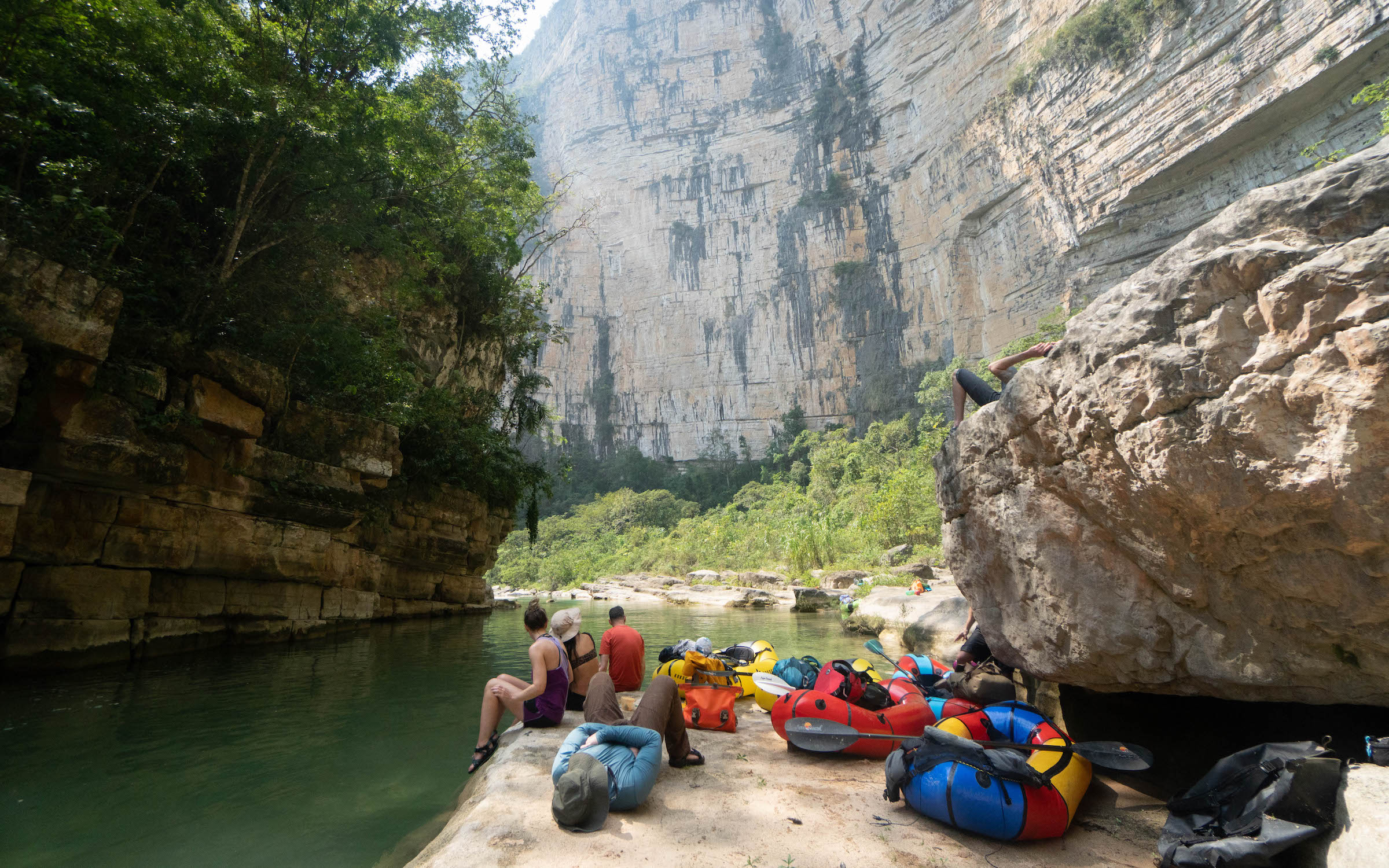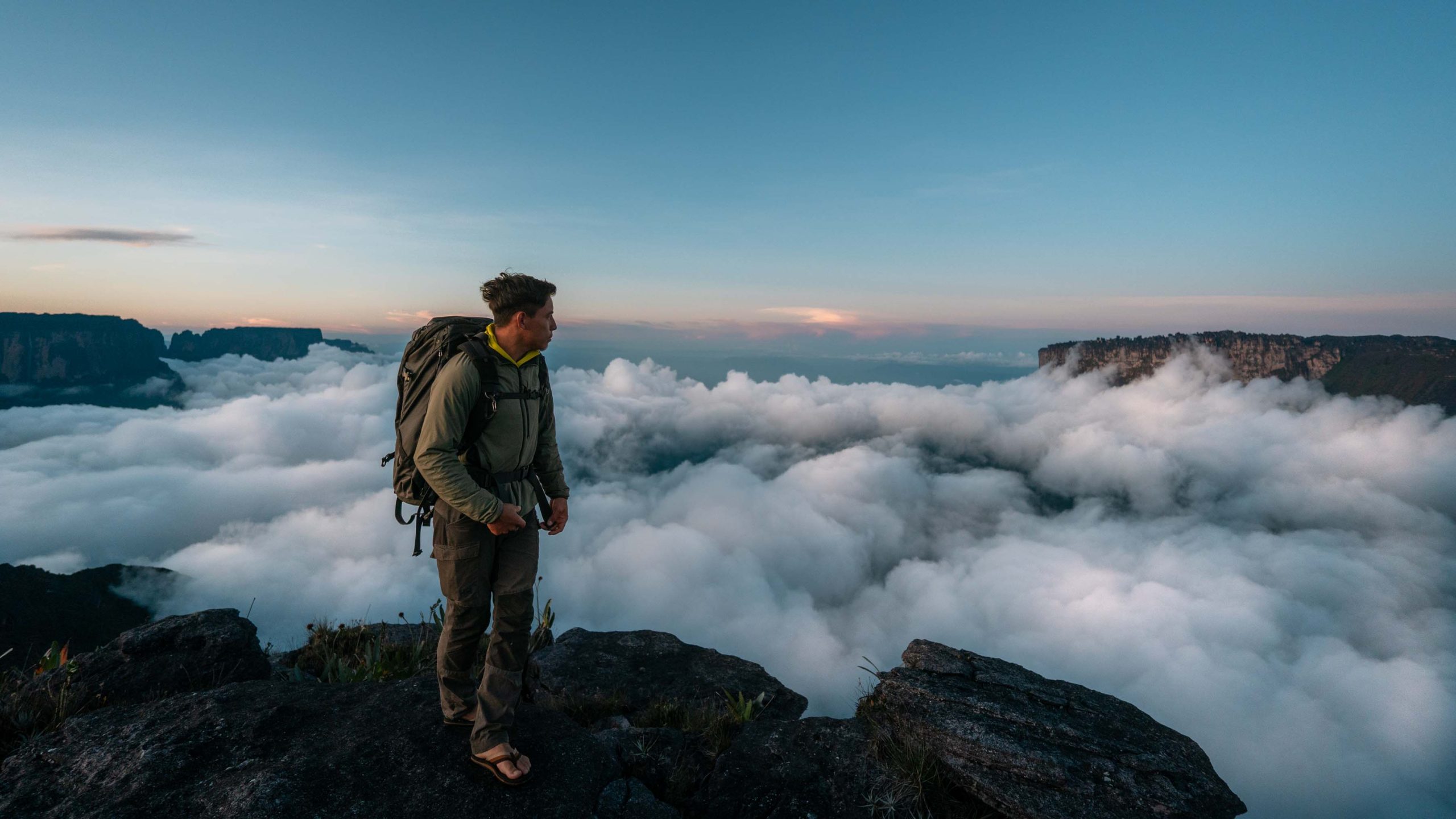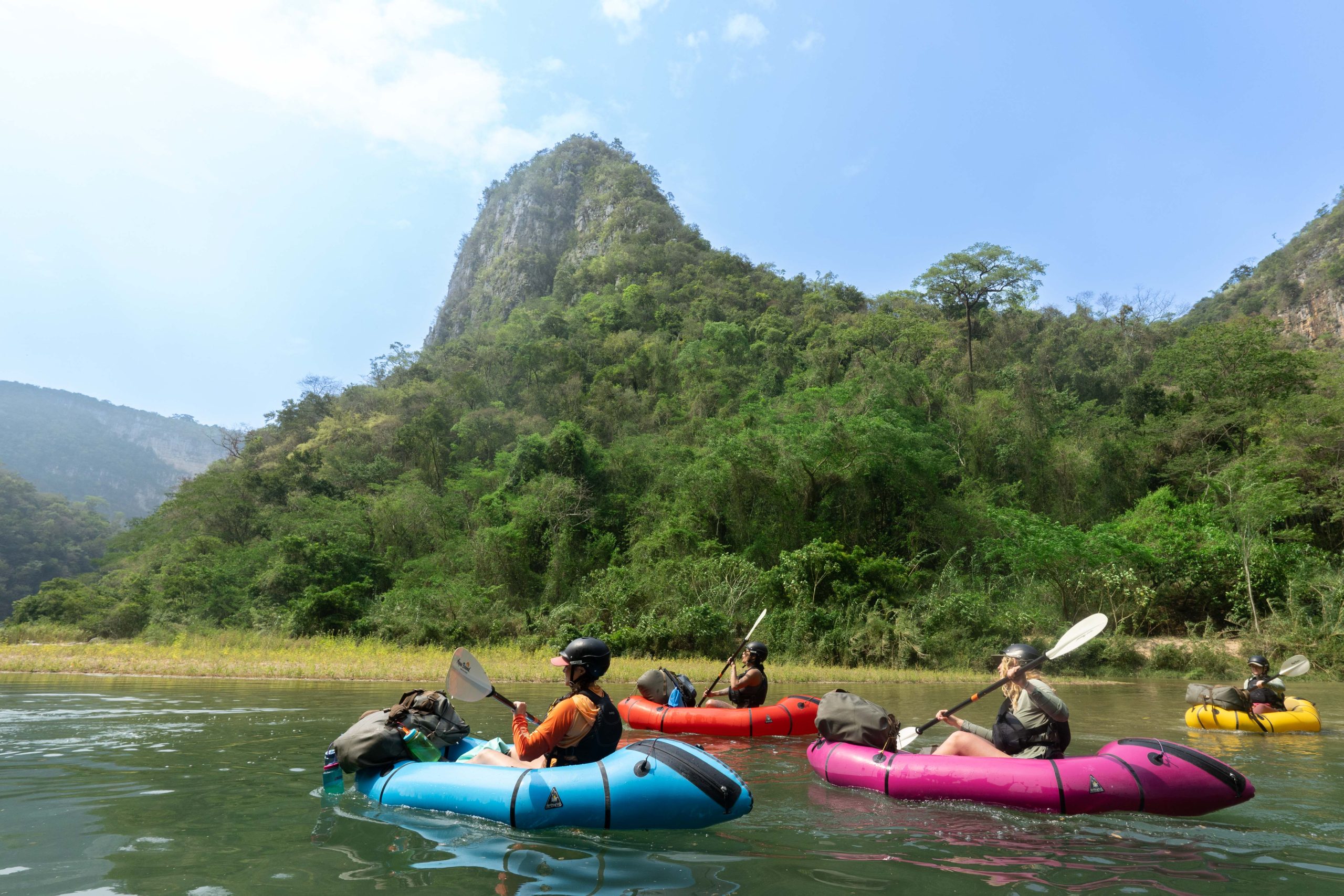How to Pack Food for Our Expeditions
Just signed up for an expedition with us and wondering how to pack food for the trip? We’ve written an in depth article to help you master food preparation for our expeditions.
NAHUA EXPEDITIONS
25 Feb 2025 ・ 7 min read
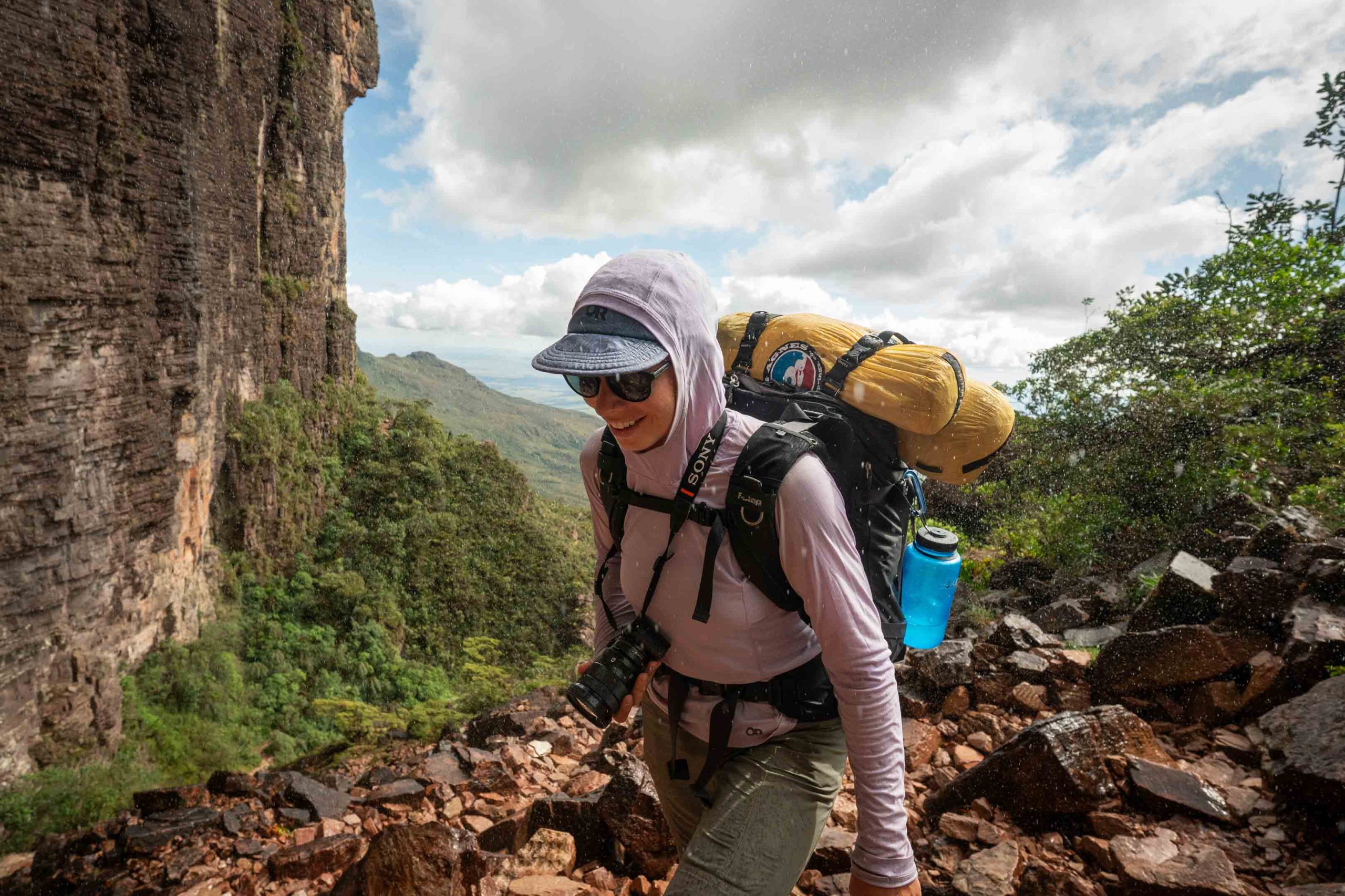
This article will guide you through how to pack food for our expeditions by choosing the right foods to bring, while balancing nutrition, weight, and energy needs. With these tips, you’ll be prepared to fuel your adventure efficiently and effectively.
What is Unique About a Trip with Nahua Expeditions?
All of our expeditions take place in remote parts of North and South America that usually only have basic grocery stores nearby. There are no outdoor recreation shops with dehydrated backpacking meals or specialty food items, so it is imperative that a custom meal program needs to be planned out prior to flying in to the country of our expedition.
To understand why it is important for our guests to pack their own food with them, read our article, Why Backpacking Meals Are Not Included on Our Expeditions.
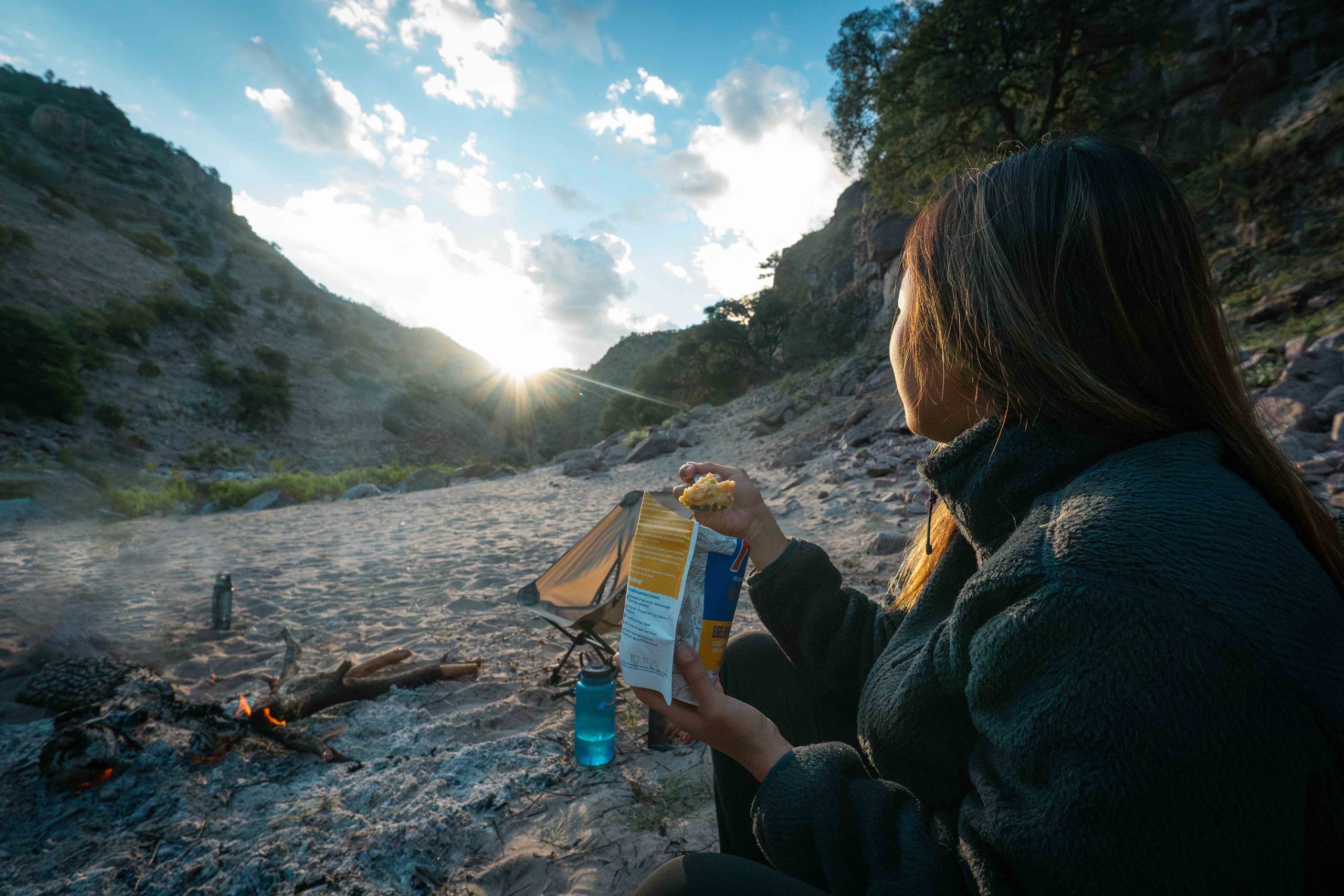
How to Approach Meal Provisioning
When we think about what kind of food is best to pack for an expedition, we consider the mode of travel—how it will be carried—and the duration of the trip.
In both packrafting and trekking expeditions, it is essential that we pack as lightweight as possible. Even on packrafting expeditions when food will be stored in our rafts or dry bags while we’re paddling, there are still times when we need to carry our food and gear—hiking in and out of the canyon and when we portage certain rapids.
What Our Days Look Like
Our groups eat two big meals on a typical expedition day—morning and evening. While we do stop for a lunch meal during the day, these are usually short stops to fuel up with snacks that we keep accessible in our smaller dry bags—the rest of our food can be stored inside the packraft of in the larger dry bag. We have found that it is better to have a lighter meal in the middle of physical activity so it doesn’t slow down our momentum and metabolism.
Each breakfast or dinner typically consists of 1 Backpacking Meal pouch. Most pouches are advertised as 2 portions, but don’t be fooled, your appetite on a physically demanding trip will happily justify whole pouch in one sitting.
Aim to pack 2 meals per day—and then add an extra 2.
Packing extra meals will be insurance for the event of an emergency that we need to stay out there longer, or simply being hungry and need more food than anticipated.
To read more about Backpacking Meals, check out our article What are Backpacking Meals, and Why are they Ideal for Adventures?
So, which Backpacking Meals are actually good?
Backpacking Meals can definitely be a hit or miss. An appealing meal to one person, might not taste very good to another person. Through experience, we have found that the brands Mountain House, Peak Refuel, and Backpacker’s Pantry are, for the most part, well received. It is also possible to find Backpacking Meals brands and recipes that are vegetarian, vegan, gluten free, or excluding specific allergens.
Where should you buy Backpacking Meals?
Depending on where you live, you can purchase Backpacking Meal pouches at major outdoor retailers like REI or MEC. Sometimes you can find discounts for certain meals or even take advantage of membership benefit programs to earn back a percentage of your spending.
Brands like Mountain House, Backpacker’s Pantry, and Peak Refuel have their own promotions that you can join through signing up for their newsletter, a membership program, or even buying in bulk to save money on individual pouches.
Since Backpacking Meals have a long shelf life, it does't hurt to buy your favorite meals in bulk so that you can be stocked up for future adventures.
Can you bring Backpacking Meals on the plane?
Because Backpacking Meals are dehydrated and not fresh, they are typically allowed across international borders. If there is any doubt on whether the food items are allowed, it helps to keep the food sealed in its original packaging. They can be packed in a carry-on or checked luggage—we never have any problems going through customs!
Is it possible to make your own backpacking meals?
Yes! Backpacking meals can be made at home with pre-dehydrated ingredients or with specialized equipment: a dehydrator or freeze drier. A great resource that we have found with insightful tips on preparing homemade meals and recipe ideas is this article by the Clever Hiker.
If you are looking for a high quality investment to make backpacking meals at home, a freeze drier produces the best results for texture, flavor, and nutrition content. Freeze drying preserves the protein structure of food from freezing and then removing water content under vacuum pressure. It is crunchier, more flavorful, and more lightweight than air dried dehydrated food.
Harvest Right makes great freeze driers for home use if you have a bit more budget for this equipment.
If you still want to make amazing backpacking meals at home without a freeze drier or dehydrator, it is possible to purchase dehydrated ingredients to make your own recipes.
How We Prepare Meals on Our Expeditions
For breakfast and dinner meals we will boil water for everyone to rehydrate their individual Backpacking Meals. By providing the cook stoves, fuel, and pots to boil water, we can eliminate these items from our guests’ packing lists. We have found that this strategy is the most lightweight, while still allowing flexibility for everyone to choose their own preferred meal plan.
Even for experienced backcountry campers that have their cooking preferences dialed in, they can take advantage of this lightweight set up to only pack the essentials—just Backpacking Meals and a utensil.
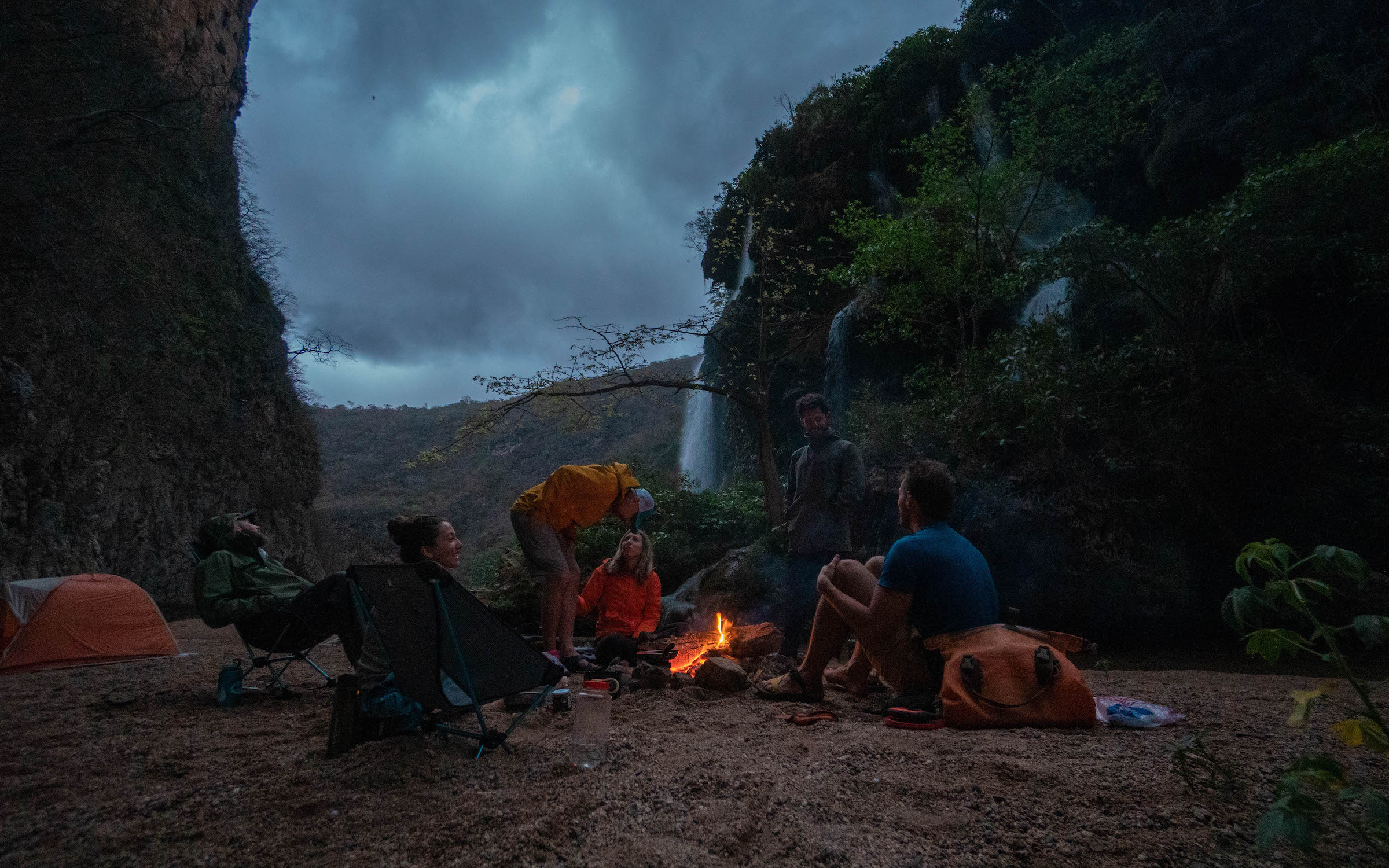
By providing boiling water on the expedition, everyone can choose their own customized meal plan and still be able to eat all together.
- Every morning, water will be boiled around 7:30AM so that everyone has enough time to eat and pack up before our 9:00 departure from camp.
- About halfway through our day, we will stop for lunch by pulling out snacks and other ready to eat food so that our stops can be convenient and efficient.
- Each evening, we will start boiling water once camp is set up. Or, if we arrive early, whenever our group is feeling hungry.
What About Other Snacks to Supplement Meals?
In addition to breakfast and dinner meals, we also recommend packing snacks to eat during the day for lunch or at any time you need to fuel up. We like to keep these snacks accessible at any point we’re feeling hungry. These extra food items provide calories and nutrition that need to be supplemented to breakfast and dinner meals. There are a few basic categories of snacks that we have found check all the boxes for energy demand as well as to satisfy any cravings.
High Protein Snack
- Protein bars, beef jerky, or nut butters are filling snacks to keep your body fueled. During physically demanding activities it’s important to sustain your energy levels for long periods of time rather than relying on instant energy through carbohydrates. Keep in mind, the average adult needs about 50 grams of protein each day, so find what works best for you in combination with your meals.
Something Sweet
- Carbohydrates can be digested and converted into energy the fastest out of any macromolecule (protein, fat, or carbohydrate). Candy is a lifesaver towards the end of the day when you feel your blood sugar crashing, and it also keeps well in a resealable plastic bag in cold or heat.
We like to keep an “Emergency Gummy Bear Reserve” for moments when we feel our energy levels dropping.
Something Salty
- Chips, crackers, or seasoned nuts hit a craving for something salty and texturally satisfying while out in the backcountry. A significant amount of salt can be removed from your body through sweat during intense physical activity, but the presence of salt in your blood stream is necessary for muscle movement, preventing cramps, and overall mood. Electrolytes do a lot of the heavy lifting in this category of ionic minerals, but eating salty snacks can taste especially good when your body is craving salt.
Something Fresh
- Packing fresh produce is a fantastic yet challenging luxury. Apples, oranges, and bell peppers all seem to survive being in a bag for a few days if you’re being careful, but keep in mind the heat factor when ripe produce is stored in a drybag that’s sitting in the sun all day. If packing produce is not possible for longer expeditions, dried fruit is also an excellent and satisfying way to eat fruit that doesn’t go bad.
Electrolytes
- Just because you’re hydrating doesn’t mean you’re replenishing the salt, glucose, and other minerals your body needs in order to sustain activity. Drinking too much water without the correct ratio of nutrients can actually dilute your blood of important minerals the brain and body need to function. Electrolytes are comprised of ionic compounds that are necessary for muscle function and mental focus during high physical output. Electrolytes are important for preventing cramps and stabilizing mood. Don’t expect to have a big selection of electrolytes when you’re traveling to remote countries or rural places. We recommend packing your favorite electrolyte packets prior to traveling for your expedition with us.
Drinking too much water without electrolytes can actually dilute your blood of essential ionic compounds that your muscles need to function.
An Example of a Typical Meal Plan
This complete list includes everything we will be eating and drinking while on an expedition. Feel free to customize your meal program for your own preferences, but let this serve as a starting point to understand everything that will be needed over the course of a week long expedition. Everything listed here can be brought in through luggage, with the exception of fresh produce.
Meals:
- 7 Dehydrated Backpacking Meals for Breakfast
- 7 Dehydrated Backpacking Meals for Dinner
- 2 Extra Meals
Utensils/Drinkware:
- 1 Long Handle Titanium Spork
- 2 x 1L Nalgene Water Bottles
- 1 Water Filter
- (Optional) Lightweight Coffee Mug
Snacks:
- 7 Protein Bars
- 7 Dried Meat Sticks
- 8 oz Bag of Candy
- 14 Individual Portion Bags of Fruit Gummies
- 16 oz Bag of Trail Mix
- 16 oz Bag of Pretzels
- 8 oz Bag of Dried Fruit
- 5 Apples or Oranges
Beverages:
- 10 Packets of Electrolytes
- (Optional) 7 Packets of Instant Coffee
Note: This packing list excludes cooking equipment to boil water because those will be provided by the Nahua Team.
Waste Management
Nahua Expeditions follows Leave No Trace Principles on all our trips. In order to respectfully visit the environments we travel to, we must pack out everything that we bring in. This includes food and human waste that must be carefully contained and sealed to be packed out in our bags.
For food waste, we prefer to use Gallon sized Ziplock bags because they are durable, lightweight, and large enough to fit all of our trash. These Ziplock bags can be reused after initially using them to hold food or snack items. As food gets eaten, this frees up more bag space for trash.
If by the end of the trip you still have food remaining, you can always share food with your group members to help lighten your pack for the hike out.
Final Thoughts
Packing food our expedition that’s optimized for nutrition, packing weight, and enjoyability will keep you fueled and energized on your adventure. Although there are many approaches to food provisioning, hopefully this article will help you avoid some of the mistakes we made along the way when learning to dial in our meal programs designed specifically for our expeditions. Everyone has their own preferences, so learn what works best for you to maximize your energy on an expedition.
What's Next?
Already signed up for your next adventure? Now that you’re equipped with the knowledge to make smarter food and gear decisions for your expedition, it’s time to put it into action. Adventure awaits, and the right preparation will make all the difference.
Still have questions? Contact us via email and we would be happy to jump on a planning call!
How to Pack Food for Our Expeditions
Just signed up for an expedition with us and wondering how to pack food for the trip? We’ve written an in depth article to help you master food preparation for our expeditions.
25 FEB 2025 ・ 7 min read
Nahua Expeditions

This article will guide you through how to pack food for our expeditions by choosing the right foods to bring, while balancing nutrition, weight, and energy needs. With these tips, you’ll be prepared to fuel your adventure efficiently and effectively.
What is Unique About a Trip with Nahua Expeditions?
All our expeditions take place in truly remote parts of Latin America, with usually only basic grocery stores in nearby towns. They do not have outdoor recreation shops with dehydrated backpacking meals or specialty food items, so it is imperative that a custom meal program needs to be planned out prior to flying in to the country of our expedition.
To understand why it is important for our guests to pack their own food with them, read our article, Why Backpacking Meals Are Not Included on Our Expeditions.
How to Approach Meal Provisioning
When we think about what kind of food is best to pack for an expedition, we consider the mode of travel—how it will be carried—and the duration of the trip.
In both packrafting and trekking expeditions, it is essential that we pack as lightweight as possible. Even though on a packrafting expedition the food will be stored in our packs while we’re paddling, there are still times when we need to carry our food and gear—when we are hiking in and out of the canyon and when we portage certain rapids.
What Our Days Look Like
Our groups eat two big meals on a typical expedition day—morning and evening. While we do stop for a lunch meal during the day, these are usually short stops to fuel up with snacks that we keep accessible in our smaller dry bags—the rest of our food can be stored inside the packraft of in the larger dry bag. We have found that it is better to have a lighter meal in the middle of physical activity so it doesn’t slow down our momentum and metabolism.
Each breakfast or dinner typically consists of 1 Backpacking Meal pouch. Most pouches are advertised as 2 portions, but don’t be fooled, your appetite on a physically demanding trip will happily justify whole pouch in one sitting.
Aim to pack 2 meals per day—and then add an extra 2.
Packing extra meals will be insurance for the event of an emergency that we need to stay out there longer, or simply being hungry and need more food than anticipated.
To read more about Backpacking Meals, check out our article What are Backpacking Meals, and Why are they Ideal for Adventures?
So, which Backpacking Meals are actually good?
Backpacking Meals can definitely be a hit or miss. An appealing meal to one person, might not taste very good to another person. Through experience, we have found that the brands Mountain House, Peak Refuel, and Backpacker’s Pantry are, for the most part, well received. It is also possible to find Backpacking Meals brands and recipes that are vegetarian, vegan, gluten free, or excluding specific allergens.
Where should you buy Backpacking Meals?
Brands like Mountain House, Backpacker’s Pantry, and Peak Refuel have their own promotions that you can join through signing up for their newsletter, a membership program, or even buying in bulk to save money on individual pouches.
Since Backpacking Meals have a long shelf life, it does't hurt to buy your favorite meals in bulk so that you can be stocked up for future adventures.
Can you bring Backpacking Meals on the plane?
Because Backpacking Meals are dehydrated and not fresh, they are typically allowed across international borders. If there is any doubt on whether the food items are allowed, it helps to keep the food sealed in its original packaging. They can be packed in a carry-on or checked luggage—we never have any problems going through customs!
Is it possible to make your own backpacking meals?
Yes! Backpacking meals can be made at home with pre-dehydrated ingredients or with specialized equipment: a dehydrator or freeze drier. A great resource that we have found with insightful tips on preparing homemade meals and recipe ideas is this article by the Clever Hiker.
If you are looking for a high quality investment to make backpacking meals at home, a freeze drier produces the best results for texture, flavor, and nutrition content. Freeze drying preserves the protein structure of food from freezing and then removing water content under vacuum pressure. It is crunchier, more flavorful, and more lightweight than air dried dehydrated food.
If you still want to make amazing backpacking meals at home without a freeze drier or dehydrator, it is possible to purchase dehydrated ingredients to make your own recipes.
How We Prepare Meals on Our Expeditions
For breakfast and dinner meals we will boil water for everyone to rehydrate their individual Backpacking Meals. By providing the cook stoves, fuel, and pots to boil water, we can eliminate these items from our guests’ packing lists. We have found that this strategy is the most lightweight, while still allowing flexibility for everyone to choose their own preferred meal plan.
Even for experienced backcountry campers that have their cooking preferences dialed in, they can take advantage of this lightweight set up to only pack the essentials—just Backpacking Meals and a utensil.
By providing boiling water on the expedition, everyone can choose their own customized meal plan and still be able to eat all together.
- Every morning, water will be boiled around 7:30AM so that everyone has enough time to eat and pack up before our 9:00 departure from camp.
- About halfway through our day, we will stop for lunch by pulling out snacks and other ready to eat food so that our stops can be convenient and efficient.
- Each evening, we will start boiling water once camp is set up. Or, if we arrive early, whenever our group is feeling hungry.
What About Other Snacks to Supplement Meals?
In addition to breakfast and dinner meals, we also recommend packing snacks to eat during the day for lunch or at any time you need to fuel up. We like to keep these snacks accessible at any point we’re feeling hungry. These extra food items provide calories and nutrition that need to be supplemented to breakfast and dinner meals. There are a few basic categories of snacks that we have found check all the boxes for energy demand as well as to satisfy any cravings.
High Protein Snack
- Protein bars, beef jerky, or nut butters are filling snacks to keep your body fueled. During physically demanding activities it’s important to sustain your energy levels for long periods of time rather than relying on instant energy through carbohydrates. Keep in mind, the average adult needs about 50 grams of protein each day, so find what works best for you in combination with your meals.
Something Sweet
- Carbohydrates can be digested and converted into energy the fastest out of any macromolecule (protein, fat, or carbohydrate). Candy is a lifesaver towards the end of the day when you feel your blood sugar crashing, and it also keeps well in a resealable plastic bag in cold or heat.
We like to keep an “Emergency Gummy Bear Reserve” for moments when we feel our energy levels dropping.
Something Salty
- Chips, crackers, or seasoned nuts hit a craving for something salty and texturally satisfying while out in the backcountry. A significant amount of salt can be removed from your body through sweat during intense physical activity, but the presence of salt in your blood stream is necessary for muscle movement, preventing cramps, and overall mood. Electrolytes do a lot of the heavy lifting in this category of ionic minerals, but eating salty snacks can taste especially good when your body is craving salt.
Something Fresh
- Packing fresh produce is a fantastic yet challenging luxury. Apples, oranges, and bell peppers all seem to survive being in a bag for a few days if you’re being careful, but keep in mind the heat factor when ripe produce is stored in a drybag that’s sitting in the sun all day. If packing produce is not possible for longer expeditions, dried fruit is also an excellent and satisfying way to eat fruit that doesn’t go bad.
Electrolytes
- Just because you’re hydrating doesn’t mean you’re replenishing the salt, glucose, and other minerals your body needs in order to sustain activity. Drinking too much water without the correct ratio of nutrients can actually dilute your blood of important minerals the brain and body need to function. Electrolytes are comprised of ionic compounds that are necessary for muscle function and mental focus during high physical output. Electrolytes are important for preventing cramps and stabilizing mood. Don’t expect to have a big selection of electrolytes when you’re traveling to remote countries or rural places. We recommend packing your favorite electrolyte packets prior to traveling for your expedition with us.
Drinking too much water without electrolytes can actually dilute your blood of essential ionic compounds that your muscles need to function.
An Example of a Typical Meal Plan
This complete list includes everything we will be eating and drinking while on an expedition. Feel free to customize your meal program for your own preferences, but let this serve as a starting point to understand everything that will be needed over the course of a week long expedition. Everything listed here can be brought in through luggage, with the exception of fresh produce.
Meals:
- 7 Dehydrated Backpacking Meals for Breakfast
- 7 Dehydrated Backpacking Meals for Dinner
- (Optional) 2 Extra Meals
Snacks:
- 7 Protein Bars
- 7 Dried Meat Sticks
- 8 oz Bag of Candy
- 14 Individual Portion Bags of Fruit Gummies
- 16 oz Bag of Trail Mix
- 16 oz Bag of Pretzels
- 8 oz Bag of Dried Fruit
- 5 Apples or Oranges
Beverages:
- 10 Packets of Electrolytes
- 7 Packets of Instant Coffee
Cookware/Drinkware:
- 2 x 1L Nalgene Water Bottles
- 1 Water Filter
- 1 Long Handle Titanium Spork
Note: This packing list excludes cooking equipment to boil water because those will be provided by the Nahua Team.
Waste Management
Nahua Expeditions follows Leave No Trace Principles on all our trips. In order to respectfully visit the environments we travel to, we must pack out everything that we bring in. This includes food and human waste that must be carefully contained and sealed to be packed out in our bags.
If at the end of trip you still have food remaining, you can always share food with your group members to help lighten your pack for the hike out.
Final Thoughts
Packing food our expedition that’s optimized for nutrition, packing weight, and enjoyability will keep you fueled and energized on your adventure. Although there are many approaches to food provisioning, hopefully this article will help you avoid some of the mistakes we made along the way when learning to dial in our meal programs designed specifically for our expeditions. Everyone has their own preferences, so learn what works best for you to maximize your energy on an expedition.
What's Next?
Already signed up for your next adventure? Now that you’re equipped with the knowledge to make smarter food and gear decisions for your expedition, it’s time to put it into action. Adventure awaits, and the right preparation will make all the difference.

